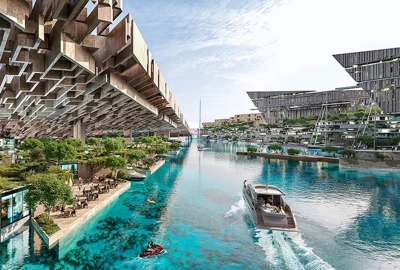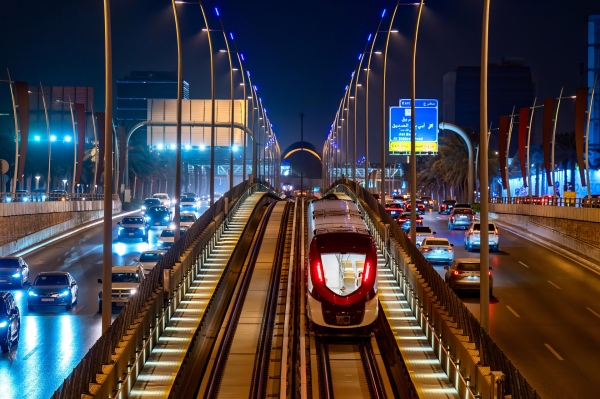
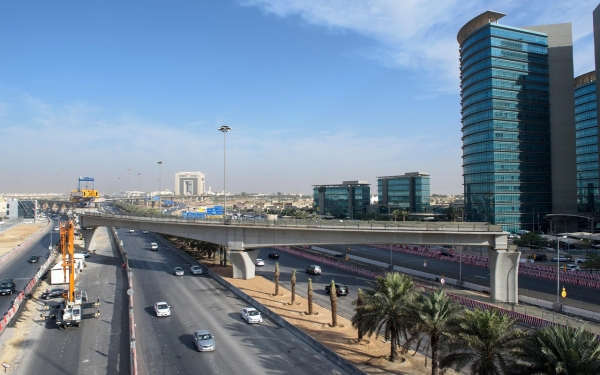
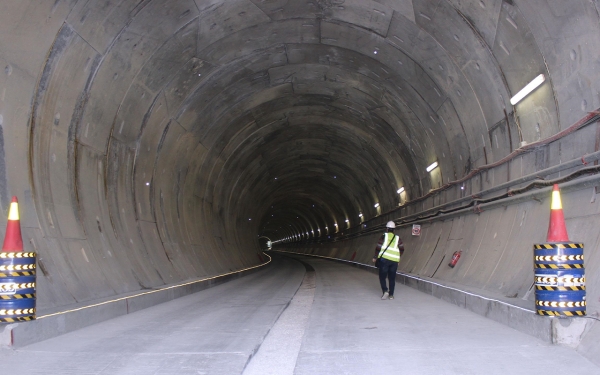
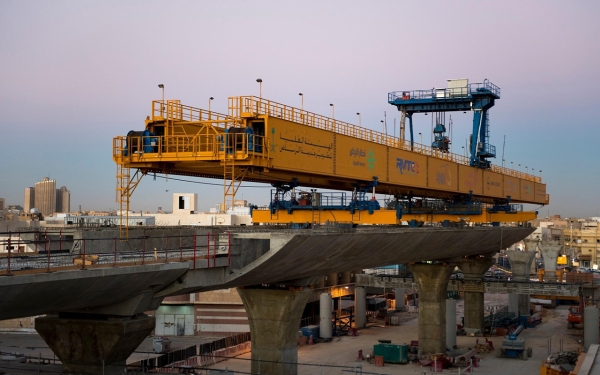
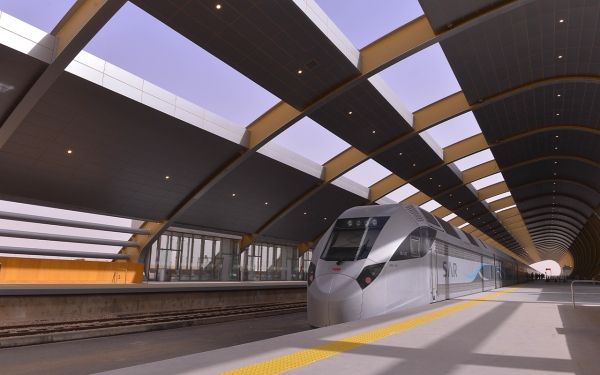
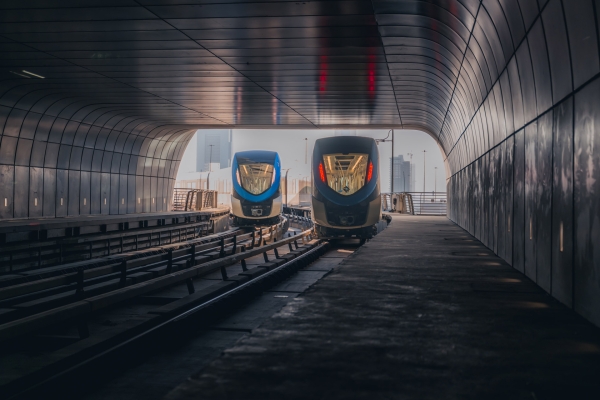
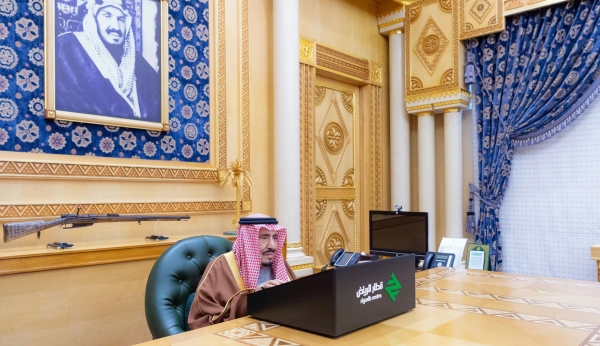
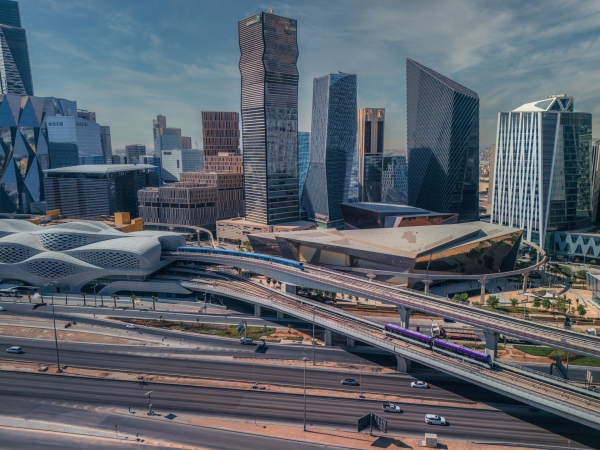
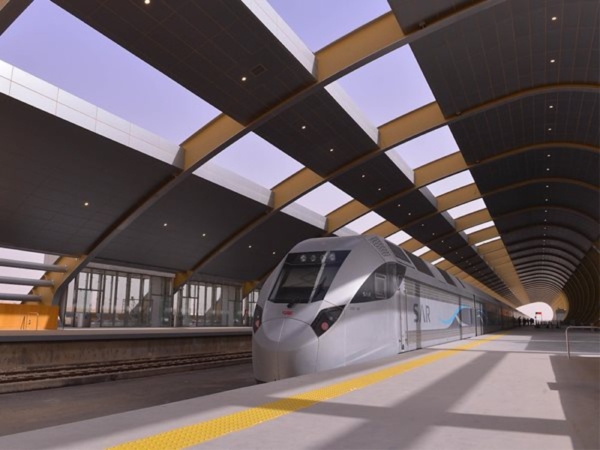
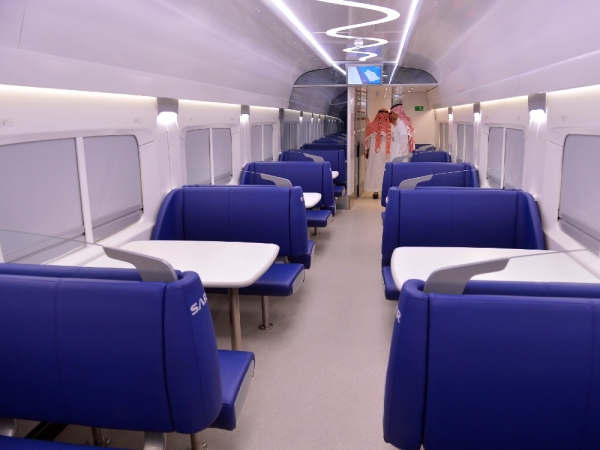
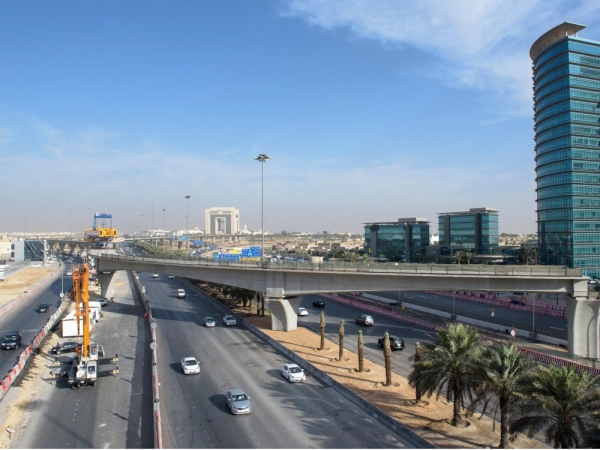
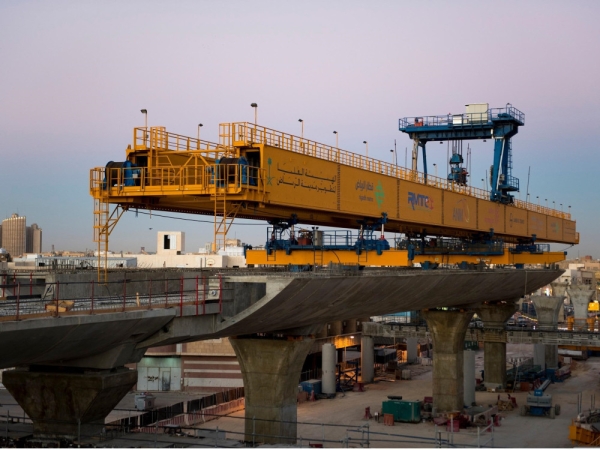
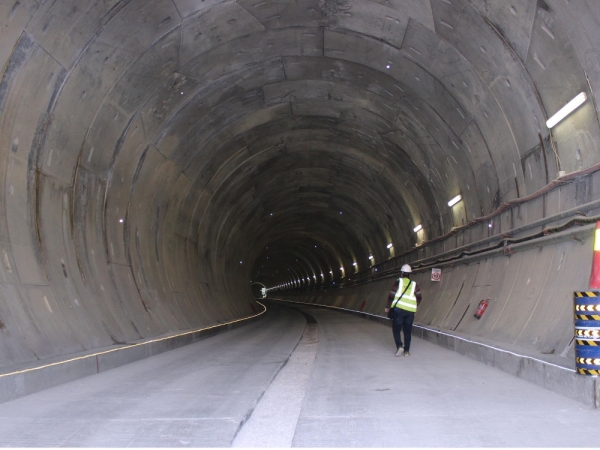
Riyadh Metro, or Riyadh Train, is a rapid transit system serving the residents of Riyadh, the capital of the Kingdom of Saudi Arabia. It forms the backbone of the city's public transport system. The execution of this project is overseen by the Royal Commission for Riyadh City. It is one of three mass transit systems operating throughout the week. It was inaugurated by the Custodian of the Two Holy Mosques, King Salman bin Abdulaziz Al Saud, on November 27, 2024.
His Royal Highness Crown Prince Mohammed bin Salman bin Abdulaziz Al Saud, Prime Minister and Chairman of the Board of Directors of the Royal Commission for Riyadh City, stated that King Salman has supported the public transportation project in Riyadh, encompassing both the metro and buses, from its inception as an idea to its realization on the ground. This was achieved in line with his wise directives to complete the project according to the highest international standards and in the best possible manner, ensuring it serves the residents and visitors of Riyadh City effectively.
An overview of the Riyadh Metro
The Riyadh Metro is the first railway project in the Kingdom with underground tunnels, reaching depths between twenty and thirty-five m. It operates on an automated system (driverless) and is controlled from central control rooms. The metro has a standardized design for its train cars, which will total 338 upon the project's completion, giving it a distinctive appearance. When operational, the project will have 202 trains, alongside five advanced centers for train movement management, control, and monitoring of all trains, tracks, stations, and various project facilities.
The Riyadh Metro project was approved following the endorsement of the Council of Ministers on April 23, 2012. This was for the implementation of the King Abdulaziz Public Transport project in Riyadh, which encompasses both trains and buses. The Saudi government awarded contracts worth USD22.5 billion to three consortiums led by some of the world's largest manufacturers and implementers of train and bus networks.
The objective of the Riyadh Metro
The Riyadh Metro aims to find solutions for residents to navigate Riyadh and put an end to traffic congestion. The project covers heavy-traffic areas such as universities, schools, hospitals, employment centers, activity areas, and malls.
The operational capacity of the Riyadh Metro
The Riyadh Metro serves approximately 1.2 million passengers, which is the project's capacity at the start of operations. This number is expected to increase to 3.6 million passengers after ten years. During its operation, the project also provides over 7,600 job opportunities annually, including 2,300 technical positions.
Riyadh Metro lines
The Riyadh Metro is divided into six lines with six globally agreed-upon colors, facilitating the commuting process. Their total length is about 176 km. They are connected to the King Abdullah Financial District, King Khalid International Airport, major universities, the city center, and the public transport hub.
Blue Line: al-Olaya - al-Batha axis
It spans a length of thirty-eight km, of which 17.3 km are underground tunnels. It has two main stations, in addition to three public parking buildings that can accommodate 1,800 employees, and two lodging and maintenance centers covering an area of 227,000 m. Its operation starts on December 1, 2024.
Red Line: King Abdullah Road axis
The length of the line is 25.3 km, and it has passenger stations in the main activity areas. Additionally, it has two parking buildings that can accommodate 1,200 employees and a lodging and maintenance center covering an area of 122,000 m.
Orange Line: al-Madinah al-Munawwarah Road- Saad Bin Abdulrahman I Road axis
The length of the line is 40.7 km, and it includes underground tunnels with a length of 9.4 km. The line features two main stations, in addition to six public parking areas that can accommodate 3,600 employees, and two lodging and maintenance centers covering an area of 204,000 m.
Yellow Line: King Khalid International Airport Road axis
The length of the line is 29.6 km, and it includes three underground stations to serve the airport's passenger terminals, in addition to the main activity area passenger stations. It also has three public parking buildings that can accommodate 1,800 employees. Additionally, it includes a shared lodging and maintenance center with an area of 168,000 m. Its operation starts on December 1, 2024.
Green Line: King Abdulaziz Road axis
It is the only line that extends entirely underground with a length of 12.9 km. It has passenger stations serving ministries and government departments, in addition to a lodging and maintenance center with an area of fifty thousand m.
Purple Line: Abdulrahman Bin Auf Road - Sheikh Hassan Bin Hussein Bin Ali Road axis
The track is thirty km long, and it has ten stations, including transfer stations, in addition to three public parking buildings that can accommodate 1,800 employees.
Operation of Riyadh Metro Lines
The operation of Riyadh Metro lines will begin in phases. On December 1, 2024, the lines on the following lines will start operating: al-Olaya – al-Batha axis, King Khalid International Airport Road axis, and Abdulrahman bin Auf Road – Sheikh Hassan bin Hussein Road axis. Then, on December 15, 2024, King Abdullah Road and King Abdulaziz Road lines will begin operation. Finally, on January 5, 2025, al-Medinah al-Munawwarah Road axis will start operating.
The destinations for the metro rides and ticket purchases can be accessed through Darb app, available in mobile app stores, by calling the project's unified customer service center at the number (19933), visiting the Riyadh Metro website, or through the project's social media accounts.
Riyadh Metro stations
Specifications of Riyadh Metro stations
Riyadh Metro stations are distributed in the most vibrant and densely populated areas of the city, with a total of about eighty-five stations. The stations are environmentally friendly, as they are equipped with solar cells that contribute to generating 20 percent of the station's electricity needs. They are also equipped with Wi-Fi service and journey information systems. All comforts, safety measures for passengers, and modern services have been provided. Additionally, a standardized architectural design has been adopted for all stations, which enhances the aesthetic appeal of the capital, Riyadh.
The main stations in Riyadh Metro
The Riyadh Metro project includes four main stations, which are located at the intersection of metro and bus lines, in areas with high density, and are equipped with a variety of services. They contain shops, ticket outlets, customer service offices, and public parking for cars. The project also includes five interchange stations specifically designed for transitioning between different metro lines. They integrate with the bus network and aim to facilitate the movement of passengers between levels of the public transportation network in Riyadh City.
Qasr al-Hukm District Station
The station of the palace area is located in the center of Riyadh, next to Musalla al-Eid ground. It intersects with Metro Line No. (1) al-Olaya - al-Batha axis and Metro Line No. (3) al-Madinah al-Munawwarah Road - Prince Saad Bin Abdulrahman I Road axis. Its area is about 19,600 m. The Norwegian architectural company Snøhetta won the design contract.
King Abdullah Financial District Station
King Abdullah Financial District Station is located on the eastern side of King Abdullah Financial Center, on King Fahd Road, at the intersection of Metro Line No. (1) al-Olaya – al-Batha axis, Metro Line No. (4) King Khalid International Airport axis, and Metro Line No. (6) Abdulrahman Bin Auf Street - Sheikh Hassan Bin Hussein Bin Ali Road axis. In coordination with the Public Pension Agency, a plot of land, approximately 8,150 m in size, was allocated for the construction of the station. The British company Zaha Hadid Architects won the design contract, and it will be connected to the metro line of King Abdullah Financial District.
The Western Station
The Western Station is located in al-Suwaidi Western Neighborhood, specifically in the Central Vegetable Market, at the intersection of Metro Line No. (3) al-Madinah al-Munawwarah Road - Saad Bin Abdulrahman I Road axis, and the designated bus route on Sheikh Mohammed Bin Abdullatif Street. The station spans an area of about 12,500 m. The Western Station comprises two stations for the metro and buses and a parking building that can accommodate one thousand cars. The design of the station was awarded to Dar Engineering Studies and its consulting engineers.
Al-Olaya Station
Al-Olaya Station is located south of King Abdullah Road, at the intersection of Metro Line No. (1) al-Olaya - al Batha Road axis, and Metro Line No. (2) King Abdullah Road axis. The station covers an area of about eleven thousand m. The design of the station was awarded to the German architectural firm, Gerber.
Riyadh Metro infrastructure
Car Parking
The Riyadh Metro project has facilitated the use of train networks by providing twenty-one parking locations distributed throughout the city to accommodate passengers transitioning from their cars to the metro. Each location can accommodate between two hundred and six hundred cars.
Security and safety systems
To ensure the safety of passengers and facilities, the Riyadh Metro project includes numerous security and safety systems equipped in project-related facilities, such as carriages and stations. These include fire extinguishing systems, advanced surveillance systems encompassing CCTV cameras and early warning systems, tunnel safety systems, and automated communication systems with the control and operation center and specific security entities.
Accomodation and maintenance centers
The Riyadh Metro project includes seven maintenance centers, which house offices for employees and workers responsible for operation and maintenance, as well as control centers, workshops, and warehouses for conducting periodic maintenance tasks.
Electric power substations
The Riyadh Metro project requires an electrical capacity estimated at 468 MVA. In cooperation with the electricity company, each line will be powered through two different sources. This will involve the construction of four main transformer substations, expanding eight existing substations, and connecting them to the network through the extension of underground cables that have a combined length of approximately eighty-four km.
Related quizzes
Related articles


